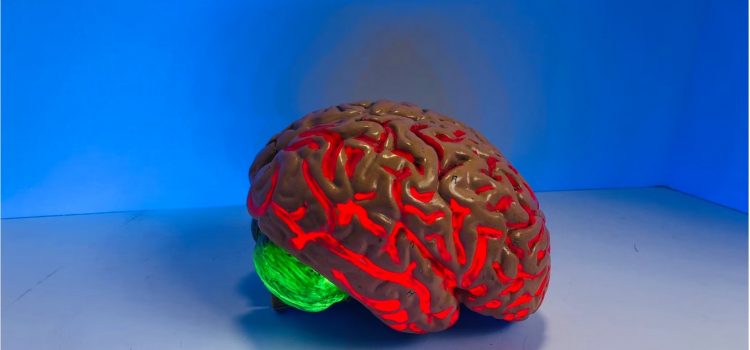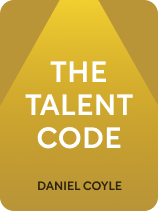

This article is an excerpt from the Shortform book guide to "The Talent Code" by Daniel Coyle. Shortform has the world's best summaries and analyses of books you should be reading.
Like this article? Sign up for a free trial here.
What does myelin do? What role does it play in talent?
In The Talent Code, Daniel Coyle reveals that talent comes from myelin, a sheath that’s wrapped around each nerve cell. He further explains how myelin produces skills and talent.
Read below to learn the role of myelin in development.
Myelin Matters
In trying to pinpoint the source of talent, Coyle discovered that talent isn’t something you’re born with—it’s something you develop over the course of your life. Specifically, talent is directly proportional to the amount of myelin (fatty, speed-enhancing nerve insulation) in your brain: The more you work on growing your myelin, the more talented you become.
What does myelin do exactly? To answer this, we’ll first describe what myelin is and its function in the brain. Then, we’ll explain why Coyle argues that myelin is the key to extraordinary talent.
The Nature Versus Nurture Debate
Coyle’s argument that talent isn’t something you’re born with is part of a longstanding debate about whether it’s your genetics or your environment—“nature” or “nurture”—that determines your fate.
Arguing for the “nature” side of the debate, the 1994 book The Bell Curve asserts that genes are primarily responsible for a person’s intelligence and that the intellectually elite naturally rise to power in the United States. This argument echoes statements by Nobel Prize-winning scientist James Watson (who co-discovered DNA) and by prominent psychologist Arthur Jensen—who concluded that racial differences in American children’s test scores were attributable to genetics, rather than circumstances. These views drew fervent criticism for suggesting that Black Americans were intellectually inferior to whites.
In 2003, psychologist Eric Turkheimer proposed an important caveat to the nature argument: He concluded that DNA determines a person’s potential, but that their environment determines whether they reach that potential. Author Malcolm Gladwell builds on this principle in Outliers—which elaborates on his New Yorker article disputing the controversial idea that a person’s intelligence is tied to their race. Like Coyle, Gladwell argues for the nurture side of the debate.
What Is Myelin?
All of our thoughts and actions are the result of electrical signals being transmitted across networks of neurons (or nerve cells) in the brain. Within this system, myelin—a layer of fat and protein—forms a sheath around the axon (stem) of each neuron. This myelin sheath acts as insulation that prevents electrical signals from leaking out of the pathways between neurons—thereby increasing the signals’ speed and strength. A highly-myelinated neural pathway is able to execute commands from your brain (for example, a command to pitch a fastball) more efficiently than pathways with less myelin.
When you repeatedly activate a neural pathway by performing a particular action over and over again, you send a signal to your brain that that pathway is important. It responds by increasing the amount of myelin encasing it. In other words, the more time you put into practicing an action, the more myelin you’ll build around the corresponding neural pathway.
(Shortform note: Coyle explains myelin’s role as an insulator that prevents leakage of the electricity traveling across important neural pathways. However, he doesn’t go into detail on the other essential role that myelin plays: making the signals move faster. An axon with a myelin sheath around it has gaps in the sheath called Nodes of Ranvier; as electrical signals jump across these gaps, they recharge. In other words, the presence of myelin creates a structure that “signal boosts” electrical signals as they move, decreasing the time it takes them to travel from the beginning to the end of a circuit.)
Why Does Myelin Matter?
Coyle argues that what we perceive as “talent” is largely the ease of execution that naturally comes from making a skill’s neural pathway as efficient as possible through myelin growth. Coyle explains two ways that an efficient, highly-myelinated neural circuit shows up as talent.
1) Myelin Increases Impulse Speed
Impulse speed is the speed of communication between your brain and body—you can think of it as the reaction time between thought and action. By preventing leaks along your neural pathways, myelin boosts the speed of the electrical signals your brain uses to communicate with your muscles.
In application, this allows you to make decisions about what to do—and move in accordance with those decisions—very quickly. This often can give you a competitive edge. For example, a boxer with increased impulse speed can quickly judge where his opponent’s fist is going to land and duck out of the way.
(Shortform note: In Relentless, Tim Grover explains the importance of impulse speed in athletes at the top of their field. He says that athletes who have mastered their skills can use their knowledge instinctively—they can react quickly to any situation without having to pause and deliberate. They can also remain calm in any circumstances, because their mental space not spent on decision-making can go toward finding flexible and creative solutions to problems.)
2) Myelin Creates Automaticity
Once a neural circuit becomes supercharged with myelin, the movement associated with it becomes “effortless” or “automatic”—that is, you don’t have to concentrate on it to the same degree as you would a brand new skill. This is called automaticity.
When you see someone performing a skill well, you might comment on how natural their movements look. Coyle explains that their actions seem effortless because of automaticity—a highly-myelinated neural circuit is sending commands for the actions without the person’s conscious input or deliberation
(Shortform note: While automaticity has a significant role in a task seeming “effortless,” it’s not the only factor—often, a skill feels most effortless when you’re able to achieve a “flow state” in performing it. This state combines automaticity, complete immersion, energized focus, and enjoyment.)

———End of Preview———
Like what you just read? Read the rest of the world's best book summary and analysis of Daniel Coyle's "The Talent Code" at Shortform.
Here's what you'll find in our full The Talent Code summary:
- A deep dive into where great talent comes from
- The key elements of the type of practice you need to develop talent
- Why it's never too late for greatness, if you know how to grow it






